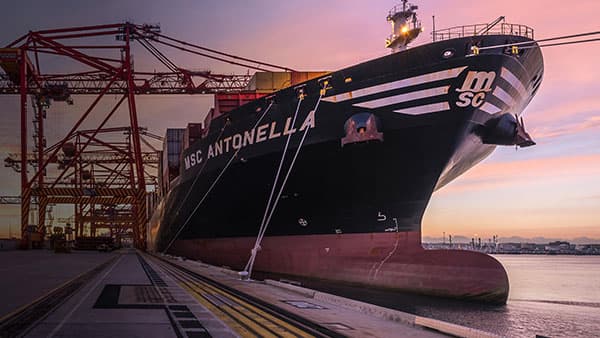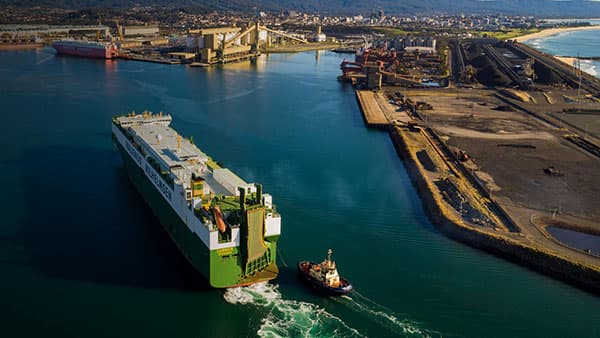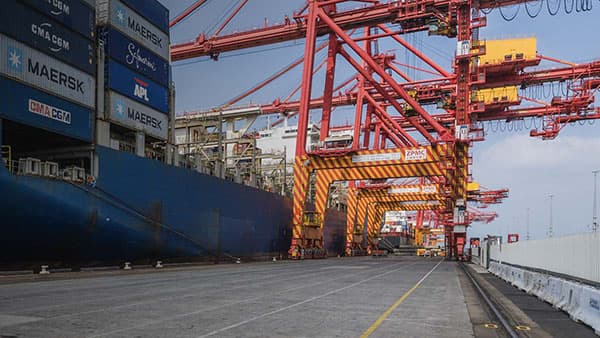
In the next 40 years, NSW's population is forecast to grow to 12.5 million, with an extra 3.8 million people living in Greater Sydney alone.
Ensuring we have the right ports and freight strategy in place to efficiently cater for the NSW's growing trade needs is crucial to the economic vitality of the State. However prematurely introducing a new container terminal before it is needed could increase costs for NSW importers and exporters, result in an 'infrastructure white elephant' and undermine decades of careful State port planning.
This is why the NSW Government's existing long-term freight and ports strategy - that Port Botany followed by Port Kembla will support NSW's container needs - is a long-standing strategy that reflects the population, demographic and economic growth trends which are to the west and south-west of Sydney.
Port Botany - the heart of NSW’s container freight
Australia is an island nation and our ports connect us with the world. In New South Wales , we are connected to the global market place by Port Botany.
Built just 40 years ago to handle containers – the international standard for transporting goods – today the port features three container terminals operated by independent stevedores, and is inextricably linked to our lives and lifestyles:

Imports goods to service the people and businesses of NSW and to export goods to the international customers.

42% of all goods in a Sydney household have been imported in containers through Port Botany – everything from food, beverages, clothing and floor coverings to mattresses, paints, fridges, televisions and toys.

Located in Sydney – at the heart of container freight – 80% of all import containers travel no further than 40 kilometres from Port Botany where they are unpacked and distributed to customers, primarily in the Greater Sydney Area. Being located close to the end destination of the container reduces truck kilometres travelled.

Connected by dedicated freight rail at each of its three container terminals to a network of Sydney metropolitan intermodal terminals, helping to increase efficiency and reduce truck movements on Sydney’s roads.

86% of regional New South Wales export freight arrives at Port Botany by rail.
Planning for NSW's growing trade volumes
Port Botany currently handles 2.8M TEU and has capacity for over 7 million TEUs. Given NSW Government forecasts estimated that Port Botany could be handling over 7.3 million TEUs by 2056, Port Botany will be able to handle the state's growing container freight requirements for many years. Our 30 Year Masterplan sets out how the port can handle these growing trade volumes.
Port Botany can also handle ‘big’ ships. While most vessels calling into Australia are are around 5000 – 6000 TEUs, container vessel sizes are increasing due to the steady increase in the international container freight task and the consolidation of freight by shipping lines to achieve economies of scale. Current port infrastructure means Port Botany can already service vessels of more than 15,000 TEUs today.
We are also making significant investments to sustainably support container growth, and are focused on growing rail capacity to ensure efficient rail connections, which will keep supply chain costs low and reduce the cost of goods to families and businesses while keeping our exports competitive.
A fourth container terminal is unlikely to be needed until after 2045.
Port Kembla - Port of Growth
As Port Botany approaches capacity, the NSW Government's long-term strategy is to develop the state's next container terminal at Port Kembla.
A container terminal at Port Kembla has already received concept approval by the NSW Government. Its proximity to Sydney and access to west and south west Sydney mean Port Kembla is well positioned to handle the expected growth in freight volumes.
“Port Kembla has been identified as the location for the development of a future container terminal to augment capacity of Port Botany when required”
- Transport for NSW
(NSW Freight and Ports Plan, September 2018)
Population growth drives the destination of imports
Over 80% of containers through Port Botany are delivered within a 40km radius and 90% of containers within a 50km radius.
This map shows the relative location of Port Kembla to the growth centres of Sydney based on the Three Cities model of the Greater Sydney Commission, incorporating Eastern Harbour City, Central River City and Western Parkland City.
Quay Conclusions
A recent KPMG report, Quay Conclusions: Finding the best choices for additional port capacity in NSW made three key findings:

Premature port investments = higher costs for NSW
With new container capacity not needed in NSW for several decades at least, the report found that developing a new terminal would actually increase costs across the entire supply chain and require massive public investment to fund landside freight infrastructure.
If a fourth container terminal is built prematurely, the supply chain costs would increase by $21 million per year if the port is located at Port Kembla and by $45 million if the port is located at the Port of Newcastle. (These costs exclude public investment required for rail and road connectivity).
These costs would have to be recovered across the same volume of containers resulting in higher prices for the NSW public and businesses.

Port Kembla makes the most sense for containers, but only once Port Botany nears capacity.
Port Kembla's proximity to the greater Sydney population centre and major freight facilities in western and south western Sydney are key drivers for the development of this location. Parts of south western Sydney are almost as close to Port Kembla as they are to Port Botany.

Containers at the Port of Newcastle makes the least sense for NSW
The research shows a container port in Newcastle would impose the highest overall costs and offer the lowest overall benefit. It is nearly double the distance of Port Kembla from the key growth areas of Greater Western Sydney and South Western Sydney. It also has the most constrained road and rail links to Sydney, and will introduce thousands of heavy vehicles onto Newcastle’s streets, the F3 and across Sydney.

Quay Conclusions
To learn more about the key findings in the report, please download Quay Conclusions below:



